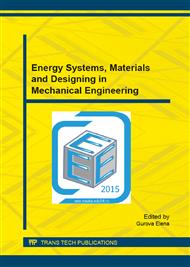p.83
p.90
p.95
p.101
p.107
p.113
p.122
p.128
p.134
An Analysis of the Main Factors on the Wear of Brushes for Brush-Type Motors and the Ways of Increasing their Lifetime
Abstract:
The mathematical description of the wear processes of brushes of brush-type motors is described. The actions directed on increase of the lifetime of brushes are offered. The proposed mathematical model of the wear processes of brushes considers the highest number of parameters of a sliding contact, including sparking energy of windings switching and the mechanical condition of a commutator and bearings. The approach for evaluating the optimum pressure on the brush in order to increase its resource is offered. The real and the virtual lifetime tests of the universal motor considering changing of the mechanical state of the commutator and bearings during lifetime were carried-out. The constant force value acting on the brush which provides its lifetime increase by 11% is proposed.
Info:
Periodical:
Pages:
107-112
Citation:
Online since:
September 2015
Price:
Сopyright:
© 2015 Trans Tech Publications Ltd. All Rights Reserved
Share:
Citation:


